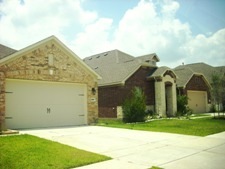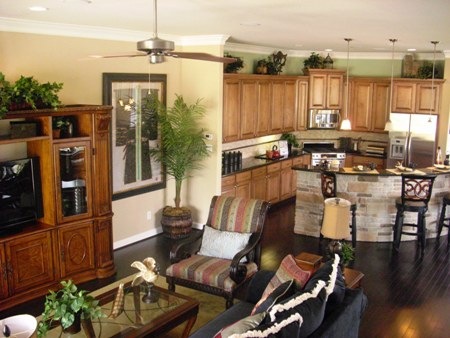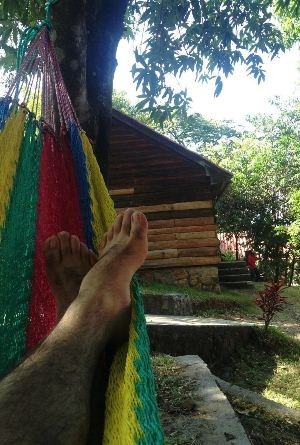Gringo-style construction, another wave
An interesting day, the main objective of this has been to know the constructive techniques for housing in the United States.
The instruction has been good, and I hope to write little by little in the measure of my time, in this case I want to focus on my perception of the gringo style.
Hispanics have great cultural differences with Americans, the case of housing construction is an example
For us, buying a house is more a basic need, very associated with the family, and it is common for the young man who finished his university to marry and together with his partner will seek a house or build it to be with his children the rest of their lives or at least as far as possible. (About Us, I'm talking about the Mesoamerican environment in general)
In the case of Americans, the house is a status, rather than a necessity. They prefer to rent than to have a house in an urbanization (subdivision) where their lifestyle does not go.
The construction of our houses is closely associated with the materials of the environment and the safety conditions. That is why we use aggregates a lot, such as brick, concrete block, mortar and reinforced concrete. We enclose our land with a strong wall to protect us from criminals, and we make sure that the car is inside, if possible we use serpentine mesh or electricity ... and the more money you have, the higher the wall.
 They do not, barely use a fence (fence) of wood only on the back of the ground (yard) but in front they are more interested in seeing their green grass. Your car is on the track Garage, little use this and inside is a warehouse where they store everything they do not need.
They do not, barely use a fence (fence) of wood only on the back of the ground (yard) but in front they are more interested in seeing their green grass. Your car is on the track Garage, little use this and inside is a warehouse where they store everything they do not need.
 Its materials are light, wood, fiber cement and chingle. Their needs are crazy for us, the air conditioning is a must and they have it on 24 hours, everything has an insurance that covers it and high neighborhood standards to respect. Do not neglect the lawn, do not have cars in the yard, if you go with your dog on the street and he becomes a poo, you take out a special bag bought at Wallmart and pick it up ... rules like that.
Its materials are light, wood, fiber cement and chingle. Their needs are crazy for us, the air conditioning is a must and they have it on 24 hours, everything has an insurance that covers it and high neighborhood standards to respect. Do not neglect the lawn, do not have cars in the yard, if you go with your dog on the street and he becomes a poo, you take out a special bag bought at Wallmart and pick it up ... rules like that.
 It has been very interesting to see what they think of us, they don't like our customs that we take to their cities. We have traveled to different suburbs and urbanizations where there are many Latinos (although they call all those who speak Spanish Mexican) and it is a reality that they cannot avoid. Latinos have made fences breaking their traditions, we have cars in poor condition parked in front and since many of us live in one house, we have a yard full of $ 700 cars. Not that this is bad, but it is a shame to see garbage in the streets, clothes hanging on the fence and a sound system with which even Freddy Krugger can be tortured.
It has been very interesting to see what they think of us, they don't like our customs that we take to their cities. We have traveled to different suburbs and urbanizations where there are many Latinos (although they call all those who speak Spanish Mexican) and it is a reality that they cannot avoid. Latinos have made fences breaking their traditions, we have cars in poor condition parked in front and since many of us live in one house, we have a yard full of $ 700 cars. Not that this is bad, but it is a shame to see garbage in the streets, clothes hanging on the fence and a sound system with which even Freddy Krugger can be tortured.
We have been to the area of people of color (without being racist, they are black) and also the high value area of Houston. We also passed the street where Jorge Bush lives in the area known as Memorial.

Few conclusions can I draw, the first is that Americans are crazy (most of them). A person who builds 3,500 square feet, for which he will pay 950 thousand dollars and where only two people will live ... oh, and a dog, all to make a lifestyle, and once every two months invite his friends to eat sausages in the patio, drink some beer and tell really bad jokes… he's crazy. I'm sure you don't have the slightest idea that on a mountain in Central America there is a house built with scraps of wood, with a tile roof, two rooms where 7 people live and who survive on $ 60 a month… or less.
True, they are different cultures, in this case I am just making a comparison with the Mesoamerican area.
But apart from cultural shock, the training has been magnificent, know their construction techniques and how they have come to industrialize its process but are now in serious collapse by the global crisis.






